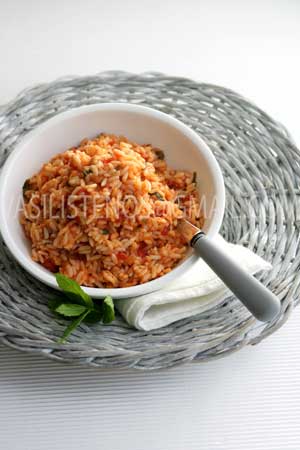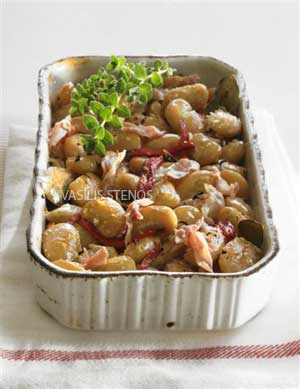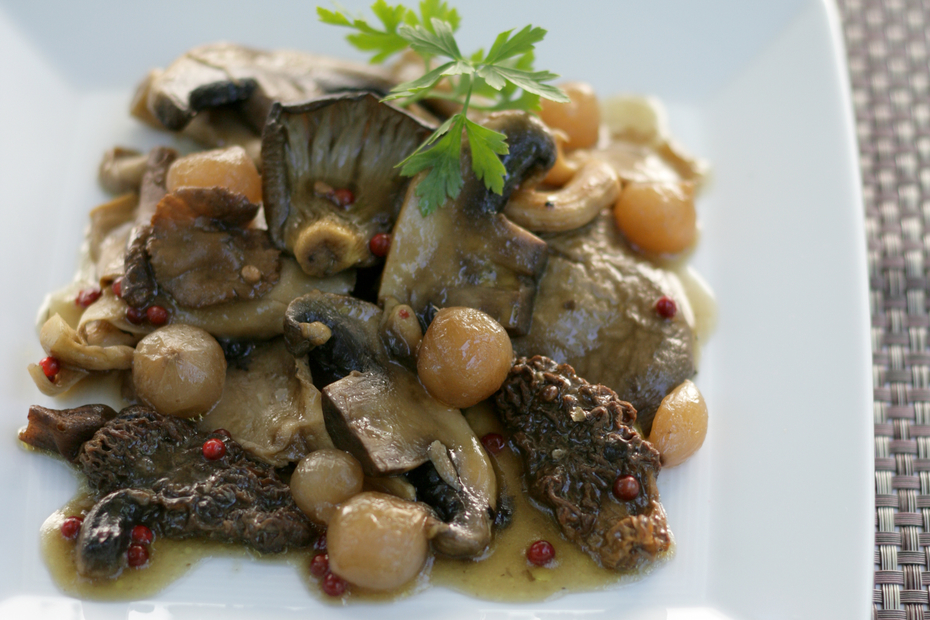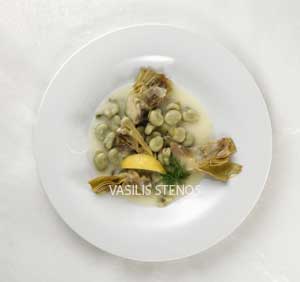 From luscious stews to delicately flavored stuffed vegetables to soups and salads and pilafs, Greek cookery is rife with meatless meals. It’s hard to think of a cuisine so closely associated with dishes like spit-roasted goat and lamb and skewered kebabs as having a strong vegetarian tradition. Yet the penchant for pulses, vegetables, and grains goes back a long way in Greece, born partly out of necessity, partly out of religious belief.
From luscious stews to delicately flavored stuffed vegetables to soups and salads and pilafs, Greek cookery is rife with meatless meals. It’s hard to think of a cuisine so closely associated with dishes like spit-roasted goat and lamb and skewered kebabs as having a strong vegetarian tradition. Yet the penchant for pulses, vegetables, and grains goes back a long way in Greece, born partly out of necessity, partly out of religious belief.
Vegetarianism as a Discipline
The ancient Greek mathematician and philosopher Pythagoras first prohibited his followers from eating all animal products. The basis of his disdain for meat was his belief that man and animals are kindred spirits, and that the human soul travels to another being after death. He promulgated a diet of raw foods, grains, herbs, berries and pure water among his followers, loathing the blood sacrifices of the ancients.
Today, vegetarianism can hardly be called a discipline in Greece, yet the traditional diet is very much rooted in foods from the garden. Fasting is still common practice. In fact, if one follows the religious calendar, with its 40-day fasts before Easter and Christmas, its 15-day fast before August 15th, the feast day of the Virgin Mary, and its prohibition of meats on Wednesdays and Fridays throughout the rest of the year, vegetables, pulses, grains, and seafood would be the mainstays of the table for about half the year. 
Economy and the Meatless Diet
Of course, economy has had much to do with the evolution of vegetable and grain dishes, too. Meat has always been dear in Greece, a foodstuff to be savored on Sundays and on special occasions. Many recipes even come in two versions, a meatless one and a vegetarian—or Lenten–rendition.
Seasonality
In winter, the meatless tables includes a host of soups and stews based on dried beans and winter vegetables, such as greens, potatoes and other root vegetables. Cabbage every which way, including stuffed and rolled into dolmathes, stewed with chicken, turkey and other meats, pickled, and raw in salads, also is an important vegetable on the winter table.
In spring, when gardens begin to overflow with delicious bounty, the repertoire of savory vegetable-and-grain dishes grows. Vine leaves, tender spring greens and shoots of all kind, artichokes, fresh broad beans and young peas are all part of the spring vegetable larder.
By June, Greek home cooks are busy stuffing and baking or deep-frying one of the season’s most delectable raw ingredients–the zucchini blossom. Dill and the feathery leaves of fennel flavor almost every pot.
By summer, the tomato, eggplant, and pepper dominate the table. And in the fall, the country is awash in one of its most fragrant vegetables—the long, horn-shaped red Florina pepper.








